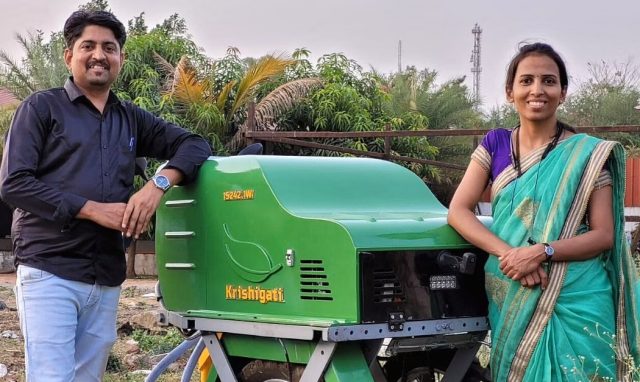Couple Tukaram Sonawane and Sonali Veljali, who are both engineers by profession, visited their hometown of Andarsul village in India for the first time in 14 years when the country was shut down due to the pandemic. Here’s how that trip led to the creation of the “electric bull.”
In the words of Tukaram, in an interview with the Better India – “We would visit our homes during festivals and other occasions, but not for more than a couple of days, as we had to rush back for our jobs. However, during the lockdown, we started working from home and received an opportunity to spend more time with family and friends.”
Tukaram happens to be a mechanical engineer.

He explains that after spending weeks back home he came to the conclusion that his village has not evolved much. To get better harvests, the farmers continued to struggle. The village continued to rely on labour and livestock for agriculture work because there was little mechanization.
Soon Tukaram began interacting with farmers and found out that the problem lied in the fact that cattle and labour costs were quite expensive. It did not look good for the marginal farmers.
That is when Sonali, who is an industrial engineer by profession helped her husband Tukaram put the dots together. They realised that these issues resulted in unreasonably high production costs. They found the root of the problem!
Read more: Inventors Who Were Killed By Their Own Inventions
In Tukaram’s words, “The processes of ploughing, tilling, sowing, and spraying insecticides usually take place manually, with the help of labourers. Moreover, there is a constant shortage of bullocks as they are expensive to maintain, and farmers tend to share resources.
A delay in any of the processes by even a week directly affects the harvest time, resulting in poor sales. If they sell their produce a week later, they do not fetch good profits.”
Soon they realised the need for a solution.
The duo then put their spare time to use and created an inventive “Electric Bull” that has great potential to aid farmers, particularly those with smaller landholdings. They describe how it completes all processes at a fraction of the price.
Their innovation is the first axle-less vehicle in its market and is designed to support cross-cultural operations in all varieties of food grain crops and pick vegetables. The vehicle operates for four hours after a full charge.
“It is a time and cost saver and can be operated by a single person. Conventional methods require about Rs 50,000 to perform all the maintenance functions for about 2 acres of land. But our equipment does the same in Rs 5,000, thereby reducing the cost to 1/10th. Moreover, the electric equipment can be charged on any single-phase unit and requires two hours for a full charge”, says Sonali.
The product is currently in production. It is expected to be out in the market soon. On a hopeful note, the couple is not only targeting the Indian market but also the African, Middle-Eastern as well as Asian markets.
With empathy powering this well educated duo, their inspirational journey has only begun. There lies a long and bright future ahead of them.
Image Credits: Google Images
Feature Image designed by Saudamini Seth
Sources: The Better India, Newsday Express, Flipboard
Find the blogger: @SreemayeeN
This post is tagged under: indian innovations, innovation, engineer, mechanical engineering, rural areas, rural india, farmer issues, Farming, india, Technology
Disclaimer: We do not hold any right, copyright over any of the images used, these have been taken from Google. In case of credits or removal, the owner may kindly mail us.